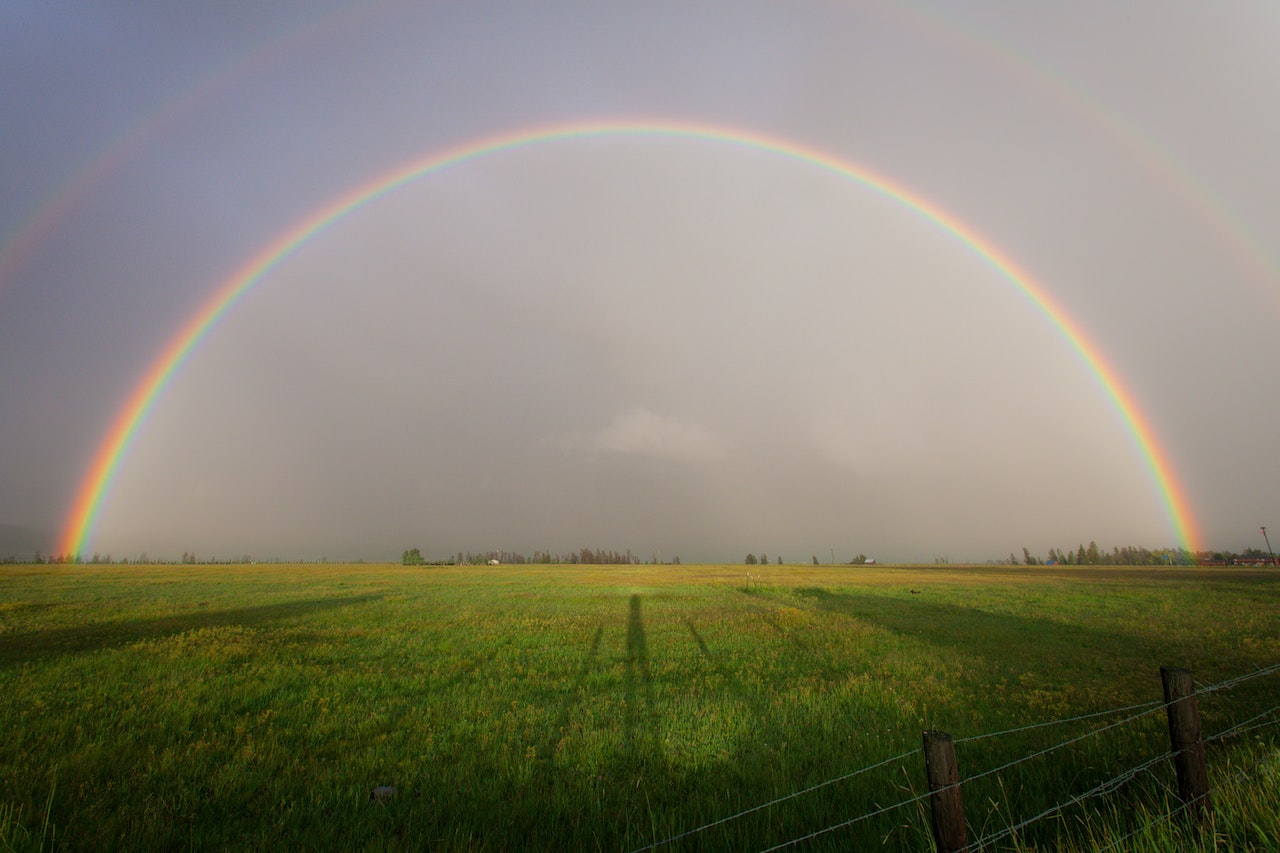Exploring the Wonders of Rainbows: Fascinating Facts You Need to Know

Rainbows have been a source of fascination for humans for centuries, inspiring art, music, and even scientific study. But how much do you really know about these beautiful phenomena? From their origins to their cultural significance, there are many interesting facts about rainbows that you may not be aware of.
In this article, we’ll take a closer look at some of the most fascinating and surprising things you need to know about rainbows.
What Causes a Rainbow?
Rainbows are a natural phenomenon that occurs when sunlight passes through water droplets in the air, such as after a rain shower. When the light enters the droplets, it bends or refracts, separating into its individual colors. This process is called dispersion, and it causes the colors to spread out in an arc shape, forming the familiar rainbow we know and love.
The angle at which the light enters the water droplet determines the angle at which it exits, which is why we see the colors arranged in a specific order – red on the outer edge and violet on the inner edge. As the light exits the droplet, it is also reflected off the back surface of the droplet, which causes the colors to bend even further, creating the distinct arc shape of the rainbow.
The Science Behind the Colors of the Rainbow
The colors of the rainbow are determined by the wavelength of the light that is refracted and dispersed in the water droplets. Red light has the longest wavelength, followed by orange, yellow, green, blue, indigo, and violet, which has the shortest wavelength.
Interestingly, rainbows are not the only natural phenomena that produce the colors of the rainbow. The same process that creates rainbows can also create other optical effects, such as halos around the sun or moon, or colorful rings around streetlights. In each case, the colors are produced by the same principles of refraction and dispersion.
The Shape and Size of Rainbows
Rainbows are typically semi-circular in shape, with the center of the arc opposite the sun. However, the size and shape of a rainbow can vary depending on the angle of the sunlight and the position of the viewer.
The width of the rainbow depends on the size of the water droplets in the air. Larger droplets produce a wider rainbow, while smaller droplets produce a narrower one. The height of the rainbow is determined by the angle at which the sunlight enters the droplets, which can vary depending on the position of the sun in the sky.
Double Rainbows: Twice the Beauty
Occasionally, a second, a fainter rainbow can be seen outside the primary rainbow. This is known as a double rainbow and is caused by the same process as the primary rainbow. However, in a double rainbow, the light is reflected twice inside the water droplets, which causes the colors to be reversed.
The second rainbow is fainter because the light is reflected again, which causes it to lose some of its intensity. Double rainbows are rare but stunning to see, and they can add an extra level of beauty to an already breathtaking natural phenomenon.
Supernumerary Rainbows: A Rare and Stunning Sight
Supernumerary rainbows are a rare but stunning optical effect that occurs within the primary rainbow. They are caused by interference between the light waves as they pass through the water droplets. Supernumerary rainbows appear as a series of faint, pastel-colored bands on the inner edge of the primary rainbow.
The Cultural Significance of Rainbows
Rainbows have been a symbol of hope, promise, and peace in many cultures throughout history. In ancient mythology, rainbows were thought to be bridges between heaven and earth and were often associated with deities or divine messengers. In some cultures, rainbows were believed to be the pathways for departed souls to reach the afterlife.
Today, rainbows are still an important symbol in many cultures and are often associated with inclusivity and diversity. The rainbow flag, for example, has become a symbol of the LGBTQ+ community and their fight for equal rights and acceptance.
Applications of Rainbow Science: From Optics to Art
In addition to the scientific and cultural significance of rainbows, the optical properties of rainbows have also inspired various applications in fields such as photography, art, and even fashion. The unique colors and patterns of a rainbow can be seen in various forms of artwork, from paintings to digital designs. Some artists have even incorporated the concept of rainbows into their work to represent hope, diversity, and unity.
Rainbows also have practical applications in optics, particularly in the design and development of optical instruments such as cameras and telescopes. For instance, prisms can be used to split light into its different colors, much like how raindrops create rainbows. This property has been used in the development of spectrometers, which can identify the chemical composition of a material based on the way it absorbs or reflects light.
In the world of fashion, the colors of the rainbow have been used as a symbol of pride and inclusivity. The rainbow flag, for example, is a symbol of the LGBTQ+ community and has become an iconic representation of diversity and acceptance.
The colors of the rainbow have also been used in clothing and accessories, particularly in the form of tie-dye patterns, to create unique and eye-catching designs. Overall, the study of rainbows and their optical properties continues to inspire and influence various aspects of our lives, from science and technology to art and culture.
And, finally, to conclude, rainbows are more than just beautiful, colorful arcs in the sky. They are the result of complex scientific phenomena that have fascinated humans for centuries. By understanding the science behind rainbows, we can appreciate their beauty even more and explore the many ways in which they continue to inspire us.





